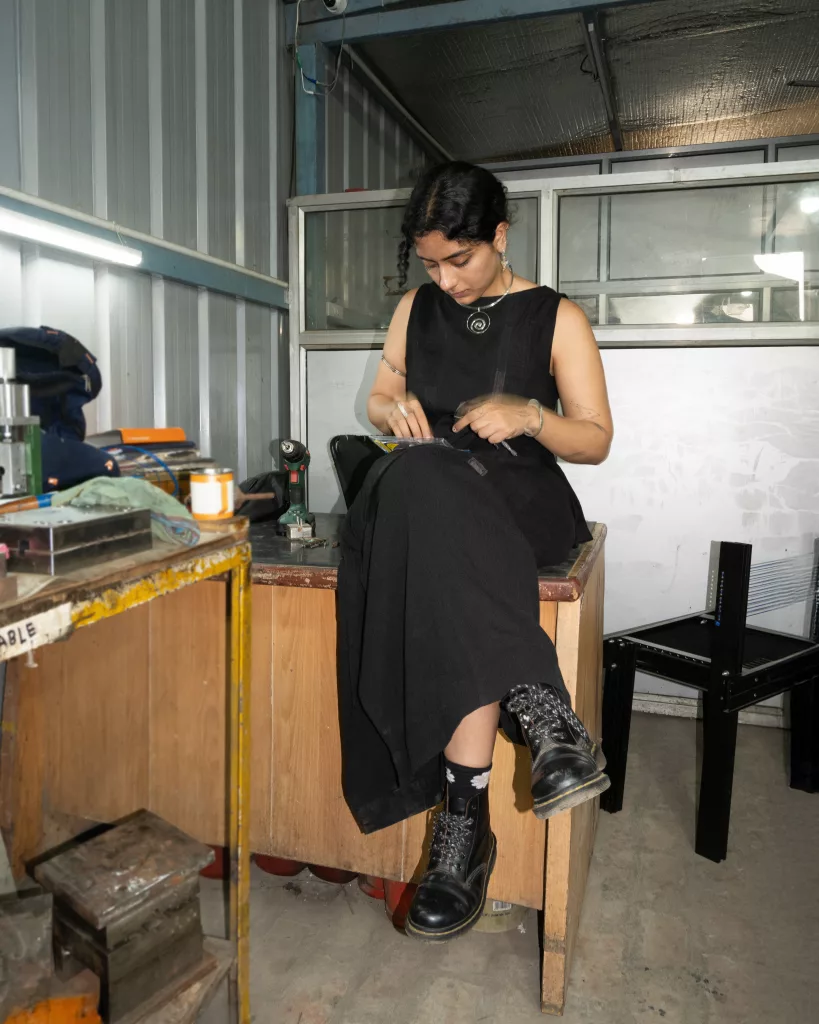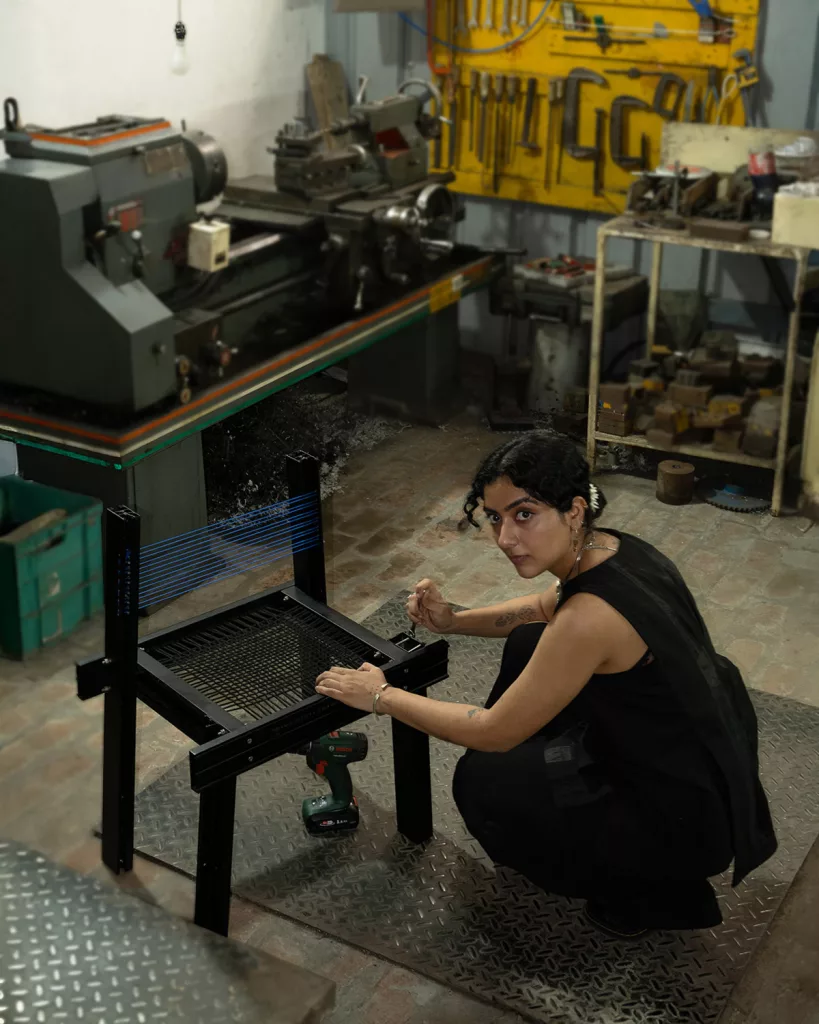From Waste to Form: Lakshita Munjal’s Dialogue Between Materials
Lakshita Munjal is an architect and visual artist based in Gurgaon. A CEPT and RCA alumna, her work bridges art and architecture through photography, printmaking, and product design. She has exhibited at the London Design Festival, India Design ID, and Southwark Park Gallery, and continues to explore this intersection as a founding partner at blurck, a multidisciplinary design agency.
We had the opportunity to speak with Lakshita about her design process — how she approaches material, form, and the subtle negotiations that shape the spaces we inhabit.
Seen here at her father’s factory, a wiring and cable manufacturing unit in Manesar, Lakshita stands with one of her recent pieces, Home, Sweet Home — a chair crafted from aluminium waste sourced from old window frames.
How did architecture and art first come together in your journey?
I was always conflicted between design and art during my early education, and I believe it was during my thesis at CEPT that the two fields began to knit together more closely. I was analysing housing advertisements, which led me to read semiotic and visual communication theories by philosophers such as Saussure, Barthes, Umberto Eco, and Susan Sontag. My growing interest in image-making drew me towards printmaking, prompting me to experiment with various home-based printing techniques like monotypes. Looking back, that was the moment when architecture and art started to fold into one another or perhaps when I began to quietly question the boundaries between them.

You’ve called your practice an “accumulation of observations.” What details in a city do you find yourself drawn to most?
It’s the “places of rest,” as I like to call them; the small corners beside a chaiwala where people have fashioned seats out of old containers, a barber using the back wall of a building to hang a mirror with an old car seat as his salon, or the way everyone rushes for a corner seat in the metro. Most of these observations stem from a primary question: how do we inhabit spaces? Be it a street, the metro, or a bedroom, I find it often comes down to the simple act of finding a place to rest. Your favourite chair on the dining table, an eye for a seat in the metro, or the search for shade under a tree. Sitting to me is the first act of habitation.
Your work often pairs unlikely materials. What is it about these contrasts that excites you?
Rather than being unlikely in their nature, they are unlikely in their mode of collection. My practice involves using found objects and construction waste to design furniture and my favorite are chairs. The process is defined by the constraints of lived materials; their condition, dimensions, and surface qualities dictate the form of the final outcome.

The act of resolving joinery and structural logic within these limitations to offer them a new function is incredibly satisfying and the thing that excites me the most. Occasionally, I integrate new material into the mix, allowing the dialogue between the old and the new to highlight the points of continuity and renewal, and sometimes for a bit of fun!
In your sculptural interventions, you question corners and boundaries. What makes these overlooked spaces compelling to you?
Corners are sites of negotiation; it’s where two walls meet, tiling patterns collide, and plumbing and other services find their place. From a design perspective, they represent both conflict and resolution. Boundaries, though often subtle, become intentional in the way we experience spaces. My work seeks to capture that sense of alienation one feels when entering a new home, a feeling that often transforms into comfort over time.
What are you exploring right now — materials, spaces, or ideas that feel especially close to you?
I’m developing a line of objects crafted from waste aluminium window frames. The chair you see in the images is one of the pieces from this series. At the moment, I’m in a research phase within my art practice, investigating how traditional Indian craft techniques can merge with my current fabrication methods. Understanding local materials and waste cycles in Gurgaon has become a big part of that process. I’m also a founding partner of a design firm called blurck. It’s a multidisciplinary studio, founded with the intention of fostering collaboration across design and its adjacent fields, running projects within architecture, furniture and graphics pan India.



Leave a Reply